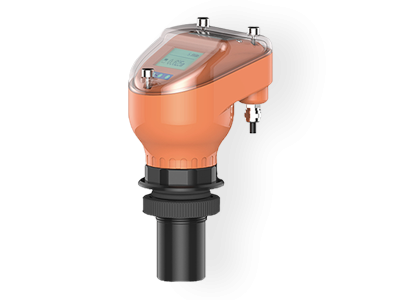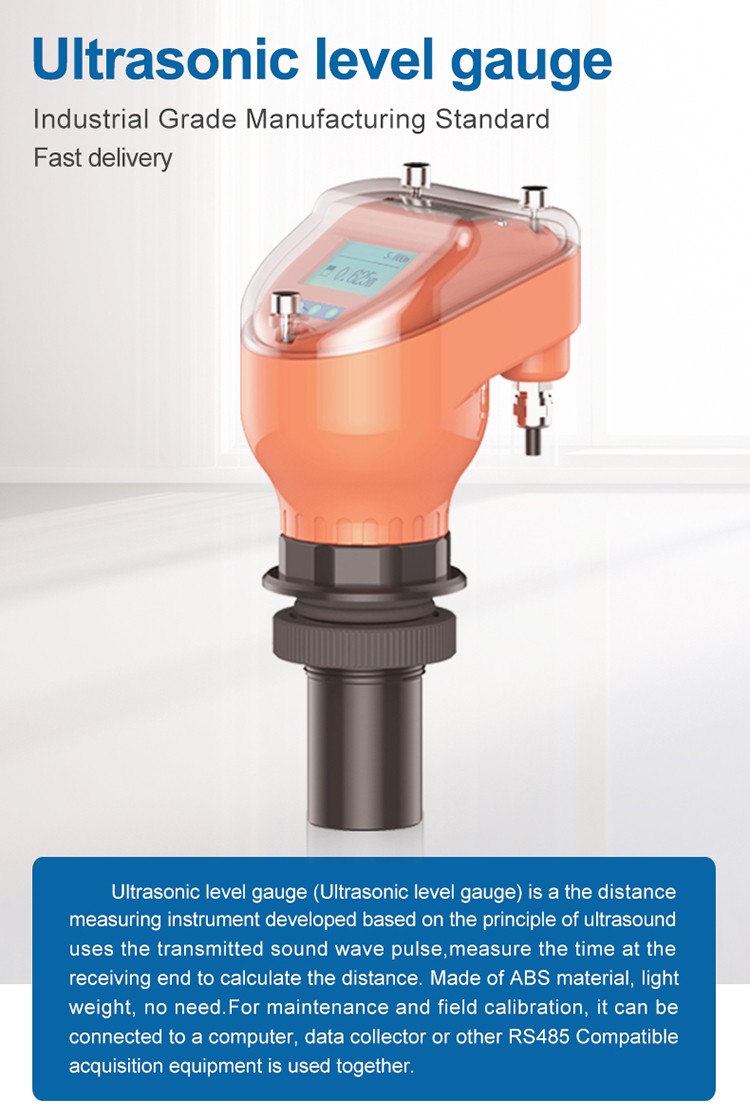
Ultrasonic Level Sensor Working Principle
An ultrasonic level sensor is mounted on the top of the tank and transmits an ultrasonic pulse down into the tank.

An ultrasonic level sensor is mounted on the top of the tank and transmits an ultrasonic pulse down into the tank.
An ultrasonic level sensor is mounted on the top of the tank and transmits an ultrasonic pulse down into the tank. This pulse, travelling at the speed of sound, is reflected back to the transmitter from the liquid surface. The ultrasonic level sensor measures the time delay between the transmitted and received echo signal and the on-board microprocessor calculates the distance to the liquid surface using the formula.
Distance = ( Speed of sound in air x time delay) / 2
Once the ultrasonic level sensor is programmed with the bottom reference of the application – usually the bottom of the tank – the liquid level is calculated by the microprocessor.The basic equation for calculating the tank level is
Level = Tank Height – Distance

Minimum measuring distance (Xm): (also known as the “Dead Band”) is a feature common to all ultrasonic level meters. This is a short range in front of the ultrasonic level sensorr within which the ultrasonic device can not measure.
Ultrasonic level sensor, which performs calculations to convert the distance of wave travel into a measure of level in the tank. The time lapse between firing the sound burst and receiving the return echo is directly proportional to the distance between the transducer and the material in the vessel. The medium is normally air over the material’s surface but it could be a blanket of some other gases or vapours. The instrument measures the time for the bursts to travel down to the reflecting surface and return. This time will be proportional to the distance from the transducer to the surface and can be used to determine the level of fluid in the tank. This basic principle lies at the heart of the ultrasonic measurement technology and is illustrated in the equation: Distance = (Velocity of Sound x Time)/2. These noncontact devices are available in models that can convert readings into 4–20 mA outputs to DCSs, PLCs, or other remote systems.
The frequency range for ultrasonic methods is in the range of 15…200 kHz. The lower frequency instruments are used for more difficult applications; such as longer distances and solid level measurements and those with higher frequency are used for shorter liquid level measurements.

The speed of sound through the medium (usually air) varies with the medium’s temperature. The transducer may contain a temperature sensor to compensate for changes in operating temperature that would alter the speed of sound and hence the distance calculation that determines an accurate level measurement. Temperature compensation is provided to account for uniform temperature variances of the sound medium. The temperature sensor is placed inside the transducer and the signal is sent to the transceiver via the transducer’s wiring. Optionally, an alternate temperature sensor can be used to provide a temperature input, rather than by using the integral temperature sensor. If the temperature of the sound medium is to remain constant, instead of using either the integral temperature compensation or the remote sensor, the desired temperature may be entered during the transceiver configuration.
The presence of heavy foam/dust on the surface of the material can act as a sound absorbent. In some cases, the absorption may be sufficient to preclude use of the ultrasonic technique. To enhance performance where foam/dust or other factors affect the wave travel to and from the liquid surface, some models can have a beam guide attached to the transducer.
Extreme turbulence of the liquid can cause fluctuating readings. Use of a damping adjustment in the instrument or a response delay may help overcome this problem. The transceiver provides damping to control the maximum changing rate of the displayed material level and fluctuation of the mA output signal. Damping slows down the rate of response of the display especially when liquid surfaces are in agitation or material falls into the sound path during filling.